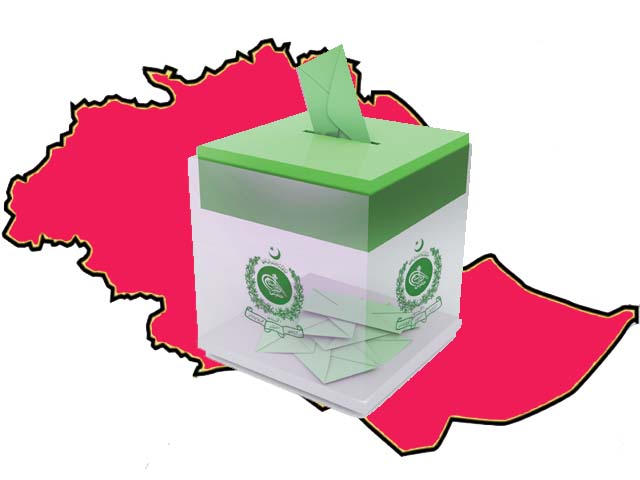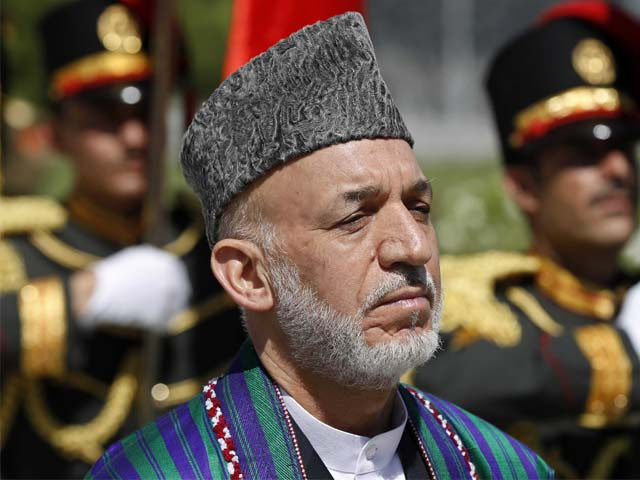
Will the Gilgit-Baltistan elections turn violent? – Part 2
This is the second article in a two part series. Read part one here.
~
II – Exogenous factors
Exogenous factors relate to the general conditions of the country. The socio-economic and political cleavages, latent conflicts, easy access to firearms and the state’s ability to police well. The level of political development, institutional strengths as well as socio-economic conditions also bear on the peaceful conduct of elections.
Political exclusion and flux in power dynamics
One of the structural factors that bears heavily on peaceful conduct of elections is the culture of political exclusion, which means a prevalent and widespread culture of excluding political opponents form the political process either through legal or illegal means. Such a culture doesn’t exist in Gilgit-Baltistan (G-B). No political party can deny an opposing candidate or a party to a chance to compete for people’s votes.
Changing power dynamics in the larger political arena sure are to trigger violence during elections, as an existing powerful group believes power is slipping away from them. The PMLN government which has ruled for the past five years has already been obliterated by a mass exodus of its electable candidates from the party, and thus securing power is a statistically insurmountable at this point for them at his point as its leaders very well know. That means that factor may not be a trigger for violence particularly because the basic power dynamic hasn’t changed much. The structural factors are intact and only the party members have abandoned the party, but with the right mix of factors the power could return to the PMLN. So the power is not irrevocably lost mitigating any chances of electoral violence.
Gender discrimination
The odds of conflict escalate rapidly if a major gender group is discriminated against or altogether prevented from elections, and in some constituencies of Diamar district women have been left out of the process by a mutual agreement by all the political parties and independent candidates. But if one party believes that its odds increase if women are included, the balance may very well tip the delicate balance of peace. This is more likely because under both the Elections Act 2017 and the Code of Conduct issued by Election Commissioner Gilgit-Baltistan have outlawed such agreements by declaring the vote null and void if at least 10% of all voters in any constituency is not women. However, the chances of violence are low as of today.
Another structural factor is easy access to firearms and per capita weapons and the existence of non-state actors and organised crime. G-B has relatively higher per capita weapons than some provinces of Pakistan due to long sectarian conflict in the region. Almost all major urban centres particular the region’s capital city is heavily armed even if the arms are light and semi-automatic. In fact, the ECGB has termed 60 polling stations of a total of 62 polling stations in Gilgit city, 23 of them are termed ‘highly sensitive’. The existence of armed non-state actors only compounds the problem. According to the National Counter-terrorism Authority, there are at least eight banned groups in G-B
Information environment
The factor of information environment also is a structural factor that can turn events towards or away from violence. Fortunately, the information environment is not very well developed and certainly neither toxic nor highly partisan that is actually a strength as a resilient institution to deploy to mitigate the situation should the events take a violent turn. The region is now heavily reliant on social media which is more destabilising and vulnerable to disinformation leading to violence.
Another good indicator of whether violence is inevitable is a history of past of violence. If the past elections have seen violence for reasons explained and unexplained, the chances of violence go up. In G-B’s past elections only a handful of instances are reported where level II violence has been reported but it was quickly managed. This should alert the election commission and general administration officials to be alert to dangers even if they are unsure of the exact drivers of the outbreak.
Watching out for ‘conflict entrepreneurs’ is an important step to ensure a countering of electoral violence. Since politics and election mean large sums of money, criminal gangs, saboteurs and aggrieved parties and other individuals and groups of people who are in the business of making money particularly through illicit means can capitalise on chaos. In many countries, such elements have either acted on their accord to sow discord or have been absorbed by political parties to do the dirty work. In 2013 elections in Honduras, a number of criminal gangs turned into political thugs to advance their patron candidates in an arrangement of mutual self-aggrandisement.
Symmetry of power distribution
If the basic structure of power distribution is asymmetrical as to suggest significant or total capture of state institutions by one interest, ethnic or provincial group of control over military policy, the election commission, the media as well as finance provokes a reaction from the discriminated groups. The very neutrality of these institutions is in jeopardy in an environment of elite capture. In G-B’s case, no meaningful political power exists in the region, as the predominant political power in the region is the federal government and the local actors hold no significant power to totally capture the institutions in a way that undermines the election’s integrity.
Strength of political parties
Another structural feature, and again an important one, is the ability of the political parties to socialise large numbers of people in its ethos and exercise intellectual and charismatic control over them. In addition to that it also truly matters if parties are capable enough and have the political will to aggregate the political demands of people especially of those who will otherwise resort to violence and articulate them in a persuasive enough language to wean them away from violence and become part of the election process as the right legitimate and legal way to ensure their interests and rights are secured. If a population has believed that their political parties cannot fulfil their needs, the only course of action for them is violence.
People in G-B have a loyalty to parties and individuals with clusters of individuals, business families, and the former raja families of G-B, but most importantly most of the people of G-B are fairly respectful and obedient to their respective sect’s leadership and are more likely to follow them in the event of a violent outbreak of electoral violence. Thus, the possibility of violence with no end in sight and no plan of action by authorities is almost non-existent.
Sectarian and tribal fault-lines
Perhaps the most volatile and potentially explosive exogenous factor is the charged sectarian atmosphere in some urban centres. G-B A-1, G-B-2 are particularly vulnerable to sectarian violence spurred by the elections. G-B has a violent sectarian history which only stabilized in the last five years. In certain other constituencies, elections can intensify tribal conflicts in certain constituencies of Diamar. In an All Parties Conference in Gilgit on Saturday, some political parties urged the election commission and the caretaker government to take action against elements who are exploiting sectarian fault lines for political benefit.
State of national politics
National political landscape in Islamabad is also likely to heavily weigh on the peaceful conduct of elections. Former Prime Minister Nawaz Sharif and Bilawal Bhutto-Zardari have already made allegations of pre-poll rigging. If the national politics take a nasty turn as G-B goes into elections this will provoke conflict in G-B. The state of relationship between the federal government and the opposition is fraught at best. Arrest of national leaders or continued harassment of opposition figures could serve as trigger.
III – Mitigation efforts and resiliencies
Identification and understanding of the key actors
The officials of the Federal as well as the caretaker government in G-B would be well advised to identify key actors of the electoral process, their grievances and motivations, and possible mitigating role they could play in case violence erupts. It should also understand the resilience of the society of Gilgit-Baltistan to which they can turn to not just stem violence but also preempt it. Some of the prominent people in the society include religious and political leaders, charismatic personalities and business interest groups who can exploit the grievances of labor to subvert elections.
The key actors are the caretaker government, political parties, civil society groups, citizens. These efforts should be made throughout the three phases of the election. These strengths are particularly important at each window for violence and the triggers to blunt. At each window for violence, the state should be prepared to deploy one of these mitigation and resilience factors embedded in the structural or exogenous environment of the election cycle.
Strong society
Like the rest of Pakistan, G-B’s redeeming feature has been its strong society, coupled by closely knitted social relationships based on Mohalla, sect, tribe and district make sustained conflict almost impossible. G-B’s social order is hierarchical and vast majority of the people especially in urban Gilgit Baltistan is cobbled together in web of cross cutting interests and identity. Such a strength of course comes at its own costs and dangers, and is certainly a double-edged sword, but given the low population and networked social relationships the society can outlast spurts of violence in their midst.
Even in the Western sense of Civil society which emphasises formal organisations with rules, structure and clear objectives, a huge number of organisations exist that can come handy in situations of hard security circumstances. Thousands of civil society, welfare, charity and development organisations are registered with G-B’s planning commission, the Deputy Commissioner’s Office as well as the SECP Gilgit.
The media: Non-disruptive and inflammatory media environment
G-B’s media environment is in its infancy, particularly the electronic and web media and thus operates in positive light that is geared more towards harmony and cooperation for development than partisan battles for dueling narratives of ideologies and interests.
Social strengths: Religious leaders’ positive influence
Perhaps the most important mitigation factor and resilience of G-B’s society is the unitary and hierarchal control and influence G-B’s four main religious groups enjoy. Time and again, these leaders have on the urgings of the government, the media, the civil society and on its own accord played role. If the political leaders fail to ensure peaceful elections and fail to control the ensuing violence, these leaders and Mosques can be counted upon to aid the government to restore order.
Institutional strength
Strong state capacity and low population
It goes without saying that the capacity of state is pretty potent to control the situation through raw force should it come to that. The state has enough manpower, and capacity and experience to control the violence. The possibility of the state security apparatus including G-B Police, G-B Scouts and Rangers is almost down to zero. In many countries, the capacity of the state has collapsed during electoral violence and with no other social, institutional strengths the violence played out eventually dying out. Another mitigating feature that bolsters all the mitigating and resilience factors is the low population. The population is really sparse in most of G-B, except for some urban areas making policing fairly easy.
It is known from our knowledge of electoral violence assessment frameworks and other analytical tools, which understand the phases of elections, that the windows for violence in each phase and triggers of violence can help election and administration officials to preempt violence and control it. G-B’s administration and society possess inherent mitigating factors as well as resilient features that can be mobilised to prevent, decrease and control the incidence of electoral violence.




COMMENTS
Comments are moderated and generally will be posted if they are on-topic and not abusive.
For more information, please see our Comments FAQ